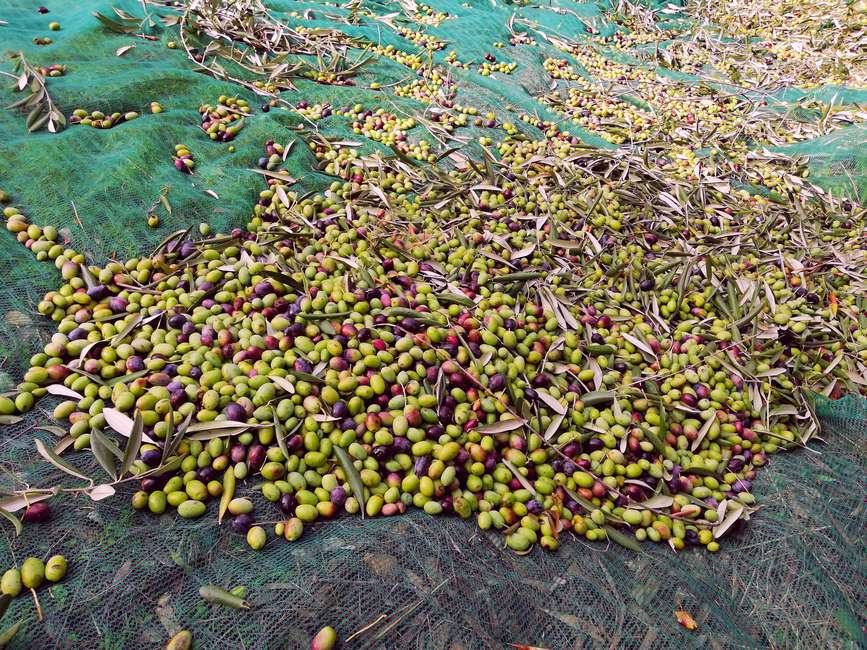
Taggiasca olives
The theme of argriculture and groves terracing is a strong point for culture and history of Deglio Faraldi. We are proud to dedicate this page to the most important tradition in our Imperia Province: the cultivation of Taggiasca Olives. And now, follow us in the description of this centuries-old activity!
Winter prunings and concimation cycles that are applied until spring prepare the plants to produce their fruits. Normally around june, little green olives appear on the branches; the maturation process continues in summer and autumn.
Before the harvest, campaigns and terracings are ordered with brushcutters so the ground remains completely cleaned and the nets can be positioned and sewn together below the trees. These particular nets that makes colored our terracings are very important to contain the olives during the olive beating. In this procedure, the growers use shaker rakes, particular instruments that looks like mechanical rakes in which some carbon little sticks positioned on the extremity create vibrations that detache the olives from the branches. This instrument represents a great technological innovation. Before the new millennium, growers utilized the traditional trappa, that was a long, flexible and simple wood stick moved directly by the operator.
All the olives fallen on the nets are put together and the little branches that were detached with the harvest are removed. The modern shaker rakes are very good instruments because create light vibrations that keep the plants in health and remove small and unnecessary dry branches. The olives are collected in plastic baskets and totally made free from leaves by defoliators that were called in the past chitarra. This name, translated with 'guitar', was adopted because the originary machine to remove the leaves had long iron wires that made the machine looks like a big guitar. In that instrument, the wires were positioned in a descent path, in which the olives were leaved roll and the leaves were lost in the spaces between the wires. Now, the contemporary chitarre are olive leaf removers composed by an iron chute and a fan. When the fan is set in motion, the leaves fly in a bag and the olives, that are too heavy for the fan, roll at the end of the chute totally cleaned.
Now, if you have a van or a mythical Ape Piaggio, you can pick up all the olives and go to the oil mill! Here the olives are washed with water on a mechanical chute and then they roll in a round tub in which two millstones transform them in a pasty mass. This mass is spread on special disks that are put into a column and then positioned in a press. The substance that comes out from the press is composed by water and oil and these two components are separated by the centrifuge. Now everything is done and we can taste the fruit of our sacrifices: the Extravirgin Taggiasca Olive Oil!
Back